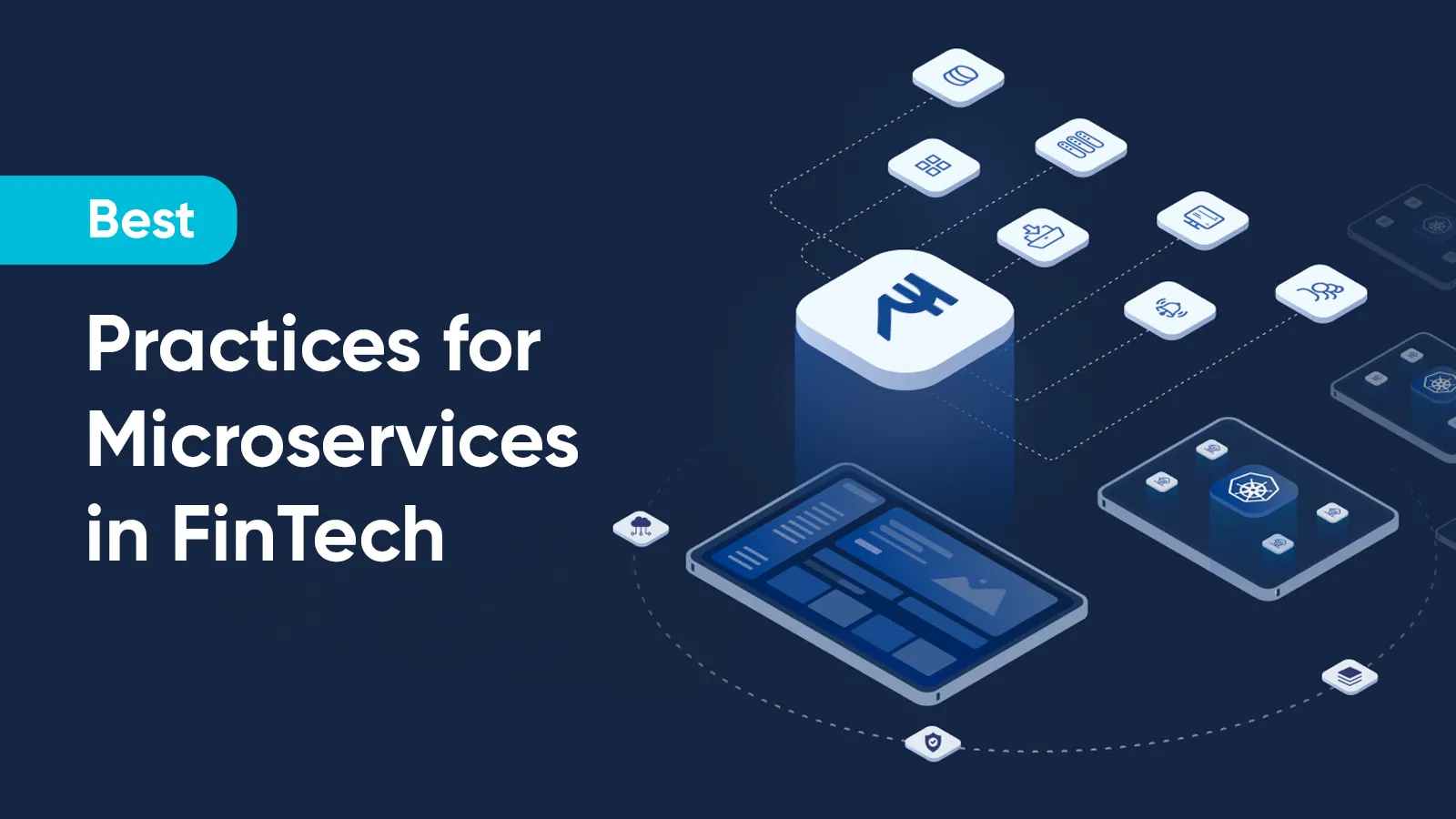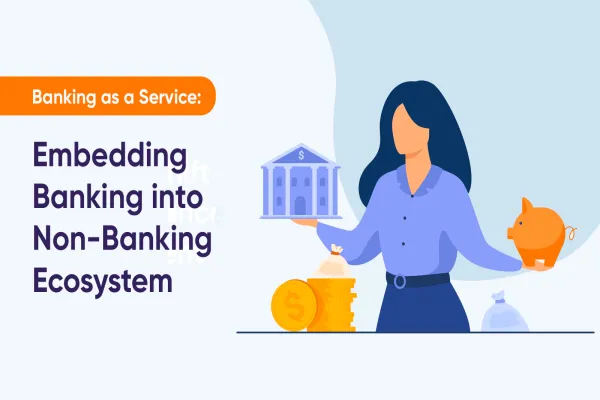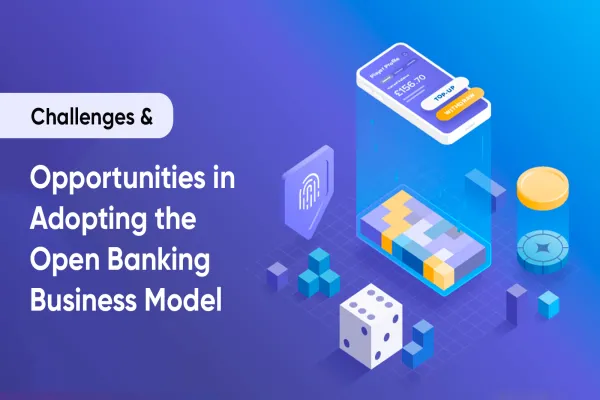Microservices have become a key ingredient in the successful recipe of a FinTech product. Even conventional financial services have recognized the importance of microservices in their digital transformation journey because microservices can digitize legacy systems of financial service companies and banks by re-architecting apps into newer ones. The popularity of microservices can be understood by the fact that over 37% of IT respondents said they at least “partially” used microservices in 2021, while 34% fully used them. This is almost 25% higher than that in 2020, according to the 2021 Global Survey results of the GitLab DevSecOps report.
Even though microservices involve complexity, monitoring systems, and organizations, the results and benefits of microservices in the FinTech industry are worth the efforts. Microservices can increase productivity by up to 50% and decrease overhead costs by half on average. The idea behind using microservices is simple- making a product that fits the bill of scalability, agility, and a constant change of market scenario- something that’s easier said than done. Age-old monolithic systems are not only difficult to restructure but also burn the pocket. In this insight, we compile best practices for microservices that will help you build a winning FinTech product.
What Are Microservices?
Microservices are a cluster of interconnected, and still independent frameworks, libraries, and tools which are designed to perform their tasks. They are written to support business goals by using different languages. Microservices are built within smaller, multidisciplinary teams, which makes it easier to deploy, test, and maintain.
Best Practices for Microservices in Fintech
Have Dedicated Infrastructure to Support Business Functions
Addressing vital issues like App security, load balancing, performance, caching, and monitoring is critical. To work on these issues, it is essential to ensure quality cloud computing services or hosting, which can handle traffic load and make the product work.
Go Slow While Migrating a Monolithic App
Monolithic architectures, also known as tight coupled architectures, come with their own set of baggage, such as stack dependencies that do not allow embedding of the latest technologies. Danske Bank, for instance, worked with monolithic architecture that relies mostly on resource sharing. This prevented the bank’s processes from functioning independently. Also, such an architecture may send unencrypted user data, which accounts for a major security breach. Monolithic architectures are not computable with microservices, which is why migration must go slow. The best practice for a financial service or fintech company is to recognize its pain points and know what legacy functionalities it needs for functionality on new architecture.
Automate RESTful APIs
REST APIs are flexible and portable, allowing a company to migrate from one server to another. Also, it helps perform database changes with much flexibility. Having said that, hand-coding customer RESTful APIs for individual microservice in the architecture requires tremendous time and resources. One way could therefore be to include a feature of automatic API generation which converts any database into REST API.
Prioritize Loosely Coupled Architecture
Loosely Coupled Architecture, also known as microservices, is lean, independent, and has a single responsibility principle. This means that each microservice is dedicated to performing one particular function only. Therefore, it makes maintenance, testing, and fault rescue an easier job. Microservices are popular in fintech app development because they can be deployed independently, and also have a lot of business responsiveness due to a clean interface for communication.
Adopt DevSecOps Security Model
We have already discussed fintech API security risks and challenges and a winning security strategy. Adopting the DevSecOps model at the core of the Software Development Life Cycle (SDLC) helps in creating a secure codebase. DevSecOps focuses on embedding security at the early stages of SDLC. This methodology uses cybersecurity as the central part of the production pipeline with other phases like architectural designing, coding, and testing.
Deploy Easily With Containers
Deploying microservices in containers makes migration flexible and portable, while also helping in managing services independently. Container Architecture is popular for deploying microservices for fintech. It comes with several benefits like container-centric infrastructure orchestration, container runtime, container orchestration, self-healing mechanisms, load balancing, and service delivery. Kubernetes application deployment architecture is such an open source platform that is widely used among developers for grouping microservices in the fintech platform.
Introduce Microservices Central Logging
As basic hygiene in microservices, central logging is considered the best practice. It is a must to have a centralized logging location and add sufficient context to logs to identify the difference between useful and useless log data. Microservices central logging enables visibility for debugging issues in a better manner.
Use Case of Microservices in Fintech: Monzo Bank
London-based Monzo Bank uses more than two thousand microservices in its architecture for building its mobile-first, cloud-native digital bank while also being compliant with regulations. The fintech application uses AWS hosting for core banking, leveraging cloud computing strength to derive benefits like flexibility and scalability. Cloud eliminates hiccups around provisioning management, infrastructure, and capacity limits.
The core banking system of Monzo Bank is established on the platform using microservices with virtualized servers that have container tools like Kubernetes and Docker. The architecture of the platform is composed of smaller elements that can scale as an entire entity, including APIs, and communicate synchronously or asynchronously. For easy interoperability, the banking fintech app is platform-agnostic. Monzo Bank’s greatest benefit from microservices architecture is organizational flexibility.
Suhail Patel, the backend engineer of Monzo says, “Monzo is a fully licensed and regulated bank in the UK. We have no physical branches. We've had this API ever since we began. You can manage all of your money and finances within the Monzo app, and the bank has more than 4 million customers in the UK.” He also adds, “We build services which are granular enough to be easily understood. Ownership of services is well-defined but can be fluid based on the goals of the company.”
In Conclusion
Fintech companies and legacy financial service companies must adopt best practices while using microservices to enter new markets and position themselves rightly. With platform banking and new-age banking apps, enhanced customer experience goes a long way. In the long-term, moving to sophisticated microservices architecture-based core MVP, a fintech solution must also coordinate with service mesh. The end goal of microservices architecture in fintech or banking services is to align different services and products from multiple platforms to provide a uniform customer experience.
To know more about the use of microservices in fintech and implementing best practices, let us connect. You may also write to us at hello@valuebound.com.





